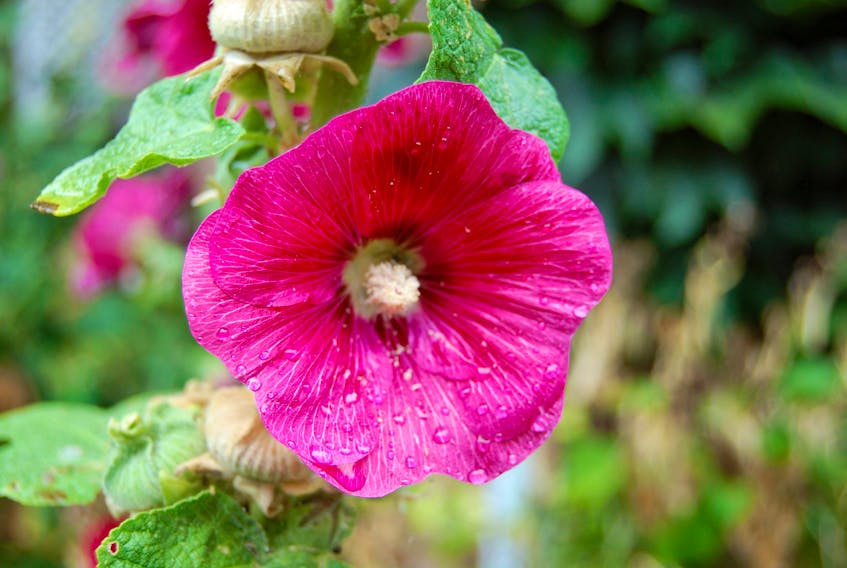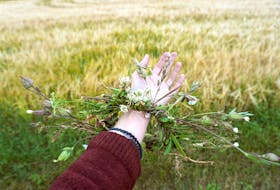Last week, we talked about food-industry trends spilling over to the cut-flower business, where “local,” “organic” and “heirloom” is taking hold for flower buyers.
What happens when the flower business becomes the food business? We are talking about edible flowers.
According to Whole Foods Market, “floral flavours,” or edible flowers, are the number one consumer food trend for 2018. This is something Ben can really get behind, as he is a food guy.
Researcher Alexandra Grygorczyk, at Vineland Research and Innovation Centre, is studying the consumer preferences behind this trend. She found that in one study “35 per cent of respondents were highly interested in edible flowers and would prefer purchasing edible flowers for their garden over more traditional plants such as blueberries and raspberries.” Grygorczyk has since partnered with Freeman Herbs to find marketable opportunities in this field.
We look at this issue from a gardener’s perspective. Here is our list of flowers you can grow that are as appealing visually as they are appetizing.
Calendula (Calendula officinalis) have edible petals with a peppery taste. Their yellow, gold and orange colour can really stand out on a plate.
Chamomile, particularly German chamomile (Matricaria chamomilla syn. M. recutita) has a cheery, daisy-like flower that can be consumed fresh or dried. Dried chamomile is best consumed as tea, however we will keep it on this list as the fresh flowers are totally edible.
Clover (Trifolium spp.) not only makes a great ground cover, germinating easily and fixing nitrogen into the soil, its flowers have a sweet, vaguely licorice-like flavour. While the whole plant is technically edible, the tender sprouts are the most delicious. Mature clover can be difficult to digest, unless you are a cow.
Dandelion (Taxacum officinalis) is most likely growing in your yard, whether you want it there or not. It is, however, an edible crop. It was imported by European settlers to use the root as a coffee substitute and the young leaves as salad greens. Hard to imagine now. Make the most of your crop by enjoying the young greens either steamed or raw. The small, unopened flowers are surprisingly sweet. You might go as far as brewing tea from its dried root.
Common Hollyhock (Alcea rosea) has very little flavour, but its brightly coloured flower petals can add an attractive splash of colour where your meal might otherwise be lacking.
Honeysuckle – believe it or not –has a honey-like flavour in its long, tube-like flowers. Japanese honeysuckle vine (Lonicera japonica) is the sweetest but be careful to avoid the rest of the plant and berries as they are poisonous. But then, so is a tomato plant, but we still eat tomatoes.
Nasturtium (Tropaeolum majus) is a colourful salad mix, as both the flower and leaves are totally edible, with a sweet-peppery flavour.
Rose (Rosa spp.) is one that surprises a lot of people. It is hard to imagine a more romantic garnish than rose petals. Indeed, all roses have edible petals, but you will want to remove them from the white base at the bottom of each petal. Intensely perfumed roses can be deceiving, as their flavour is typically subtle.
Squash and zucchini flowers, both male and female, are edible and even have a squash-like flavour. They can be prepared in a variety of ways – stuffed, fresh or fried – and they are sure to stand out on any plate.
Sunflower (Helianthus annuus) is another seldom-considered, but easy to grow and common edible flower. The petals of an open sunflower can be removed and added to soups or salads for a slightly bitter flavour. More remarkably, the entire flower head can be cooked (steamed or sautéed) before it opens and served whole for an artichoke-like flavour.
There is only one caveat to enjoying flowers as food: be mindful of any chemical treatments that have been applied to your flower crop – but especially with roses, as they are more often treated than most flowers.
- Mark Cullen is an expert gardener, author, broadcaster, tree advocate and Member of the Order of Canada. His son Ben is a fourth-generation urban gardener and graduate of University of Guelph and Dalhousie University in Halifax. Follow them at markcullen.com, @markcullengardening, on Facebook and bi-weekly on Global TV’s National Morning Show.









